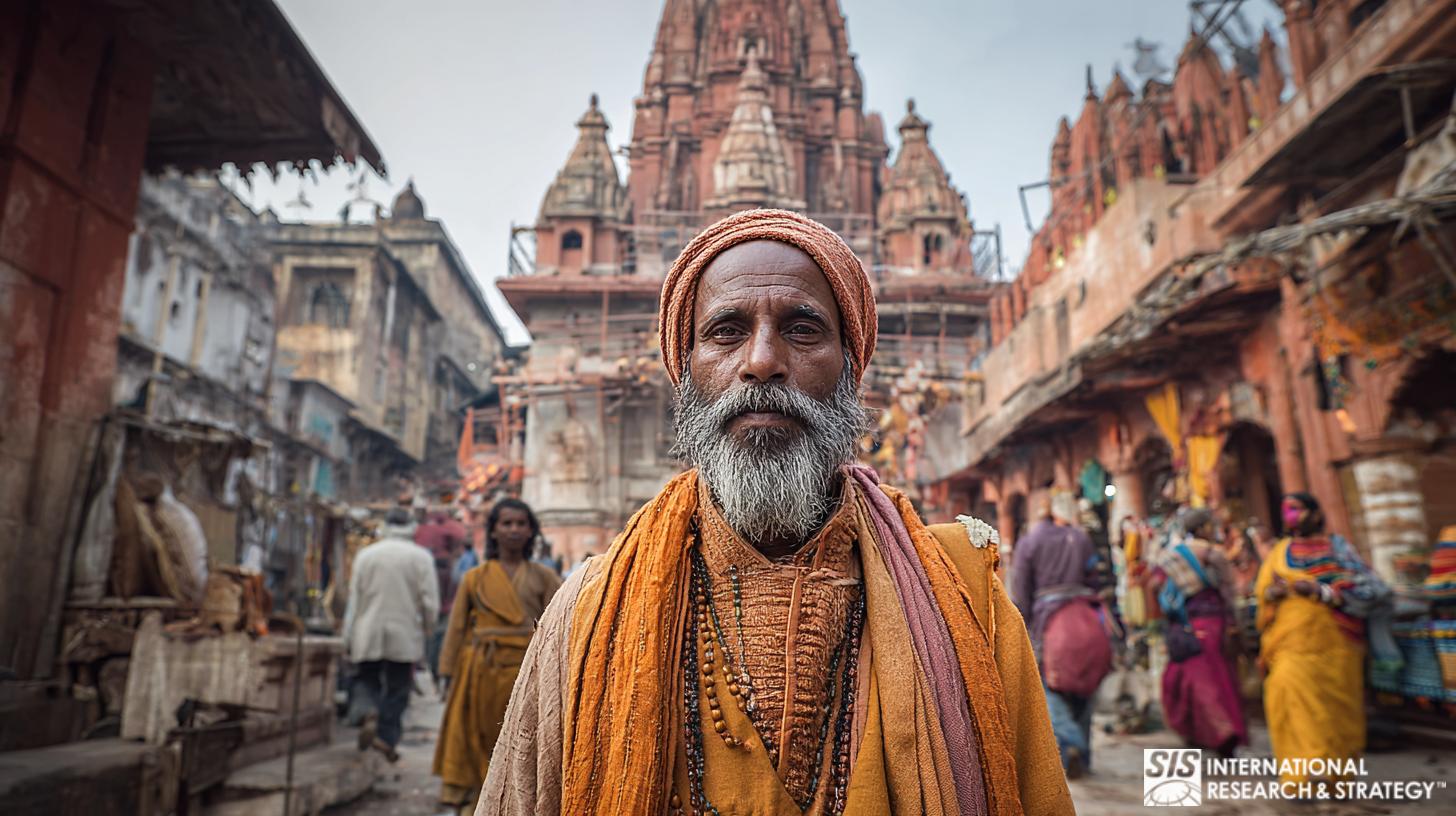Ricerche di mercato sulla religione indù

Individui e organizzazioni avviano attività commerciali con l’obiettivo primario di realizzare profitti. Condurre ricerche di mercato sulla religione indù li aiuterà a comprendere i limiti e le condizioni in quel settore. Tutte le considerazioni e gli sforzi vengono compiuti per garantire il massimo ritorno sull'investimento.
High demand usually translates to high profit, which positively reflects on the establishment’s image. It is clearly assumed that demand is linked to consumer response.
Il comportamento dei consumatori ha sempre influenzato la domanda di prodotti e servizi. Uno dei fattori che determinano tale comportamento riguarda la religione del consumatore.
Religion is a noteworthy topic because of how it directly impacts the economy. Hinduism, for instance, has a great grasp on South Asia and certain South East Asian countries. Any interested investor must understand the relationship between the religion and its devotees before making any financial move.
Table of Contents
Qual è la religione indù?
Hinduism is the third-largest religion in the world, after Christianity and Islam. It has an estimated 1.3 billion devotees worldwide, mostly in South Asia and South East Asian countries. The followers of the religion are called Hindus.
The Hindus primarily worship three gods: Brahma, the creator, Vishnu, the preserver, and Shiva, the destroyer. However, there are around 33 gods and deities, usually categorized into different groups. Brahma, called by a variety of names, is the only supreme being among them.
The Hindu religion strongly believes in the doctrines of samsara and karma. Samsara means the continuous cycle of life, death, and reincarnation, while karma refers to the return of one’s actions, whether good or bad.
Ciò che rende l'Induismo diverso dalle altre religioni è che non prevede alcuna scomunica formale o conversione dalla fede.
Paesi che praticano l'induismo

L’India, essendo uno dei paesi più popolati al mondo, è composta per la maggioranza da indù. Quasi un miliardo di indiani sono devoti della religione indù, per un totale di 80% seguaci dell'induismo.
Nepal, Bangladesh, Indonesia, Pakistan, Sri Lanka, Malaysia, and Burma are other countries that practice the Hindu religion.
Per quanto riguarda i paesi non asiatici, gli Stati Uniti hanno circa 1,8 milioni di devoti indù e il Regno Unito ne ha 800.000.
Global Overview of the Hindu Consumer Segment
| Market Metric | Key Data Point | Fonte |
|---|---|---|
| Global Population Size | Over **1.2 billion people** globally, making it the third-largest religious group, concentrated primarily in India and Nepal. | Pew Research Center (Religious Projection) |
| Indian Market Influence | Represents approximately **80% of India’s population**, making cultural and religious factors inseparable from mass-market consumer behavior, particularly in food, apparel, and festivals. | Census of India (Religious Data) |
| Digital Consumption & Content | High demand for regional and religious content. **Online video platforms** and **e-commerce sites** often see spikes in activity correlating with major Hindu festivals (e.g., Diwali, Holi). | Statista (E-commerce Data, India Focus) |
| Global Diaspora Economic Power | Significant, affluent Hindu communities in the US, UK, Canada, and Gulf nations, creating important **diaspora-specific consumer markets** for cultural goods and services. | Migration Policy Institute (Global Migration Data) |
| Ethical and Lifestyle Factors | Strong cultural factors influence purchasing: **vegetarianism** (prevalent among many segments), emphasis on **purity and natural ingredients**, and high expenditure on **family and community events**. | World Bank (Consumption Patterns Data) |
Source: Data compiled from major international and governmental bodies, as linked above.
Industries Affected by the Hindu Religion

Hindu religious practices only affect industries within the area where they are primarily practiced. Since almost all Indians are Hindu, the whole country is affected. Focusing on Hindu Religion Market research will help industries gain insight.
La scelta dietetica è un fattore importante nella religione indù. Agli indù viene insegnato ad essere latto-vegetariani, evitando carne e uova. La maggior parte pratica la limitazione della dieta a base di carne invece di astenersi del tutto dalla carne.
Hindus do not eat beef, as cows are considered sacred and represent Mother Nature. Animal lard is also not allowed, making it lucrative for vegetable-based oil to prosper. Interestingly, dairy products are allowed.
Consumption of alcohol is still up for debate. More conservative Hindus avoid consuming alcohol, believing it has a bad influence on the mind and body. On the other hand, liberal Hindus indulge in wine, especially at social gatherings. One of the companies that dominates the wine industry is Sula Vineyards. This wine manufacturer has 52% of the Indian market share.
Similar to alcohol, tobacco is not entirely prohibited. However, some Hindus believe that intoxication is a form of sin. It appears, though, that there is a significant demand for tobacco-based products. Indian Tobacco Company Limited, the leading cigarette company, alone has a market capitalization of 3.3 trillion rupees (around $40 billion).
Another industry positively affected by the Hindu religion is the incense market. Incense, better known in India as Agarbatti, is an integral item in various religious rituals.
In the textile industry, saree and angarkha are in demand. Women wearing their saree connotes how they value their culture as it portrays the deity, while men wear angarkha, which means protecting the body. Although angarkha is now produced and worn by both sexes.
Opportunità

Ecco le opportunità per investitori e aziende interessate all'induismo nei luoghi in cui la religione è dominante:
L’industria della carne suina e l’approvazione all’importazione da parte del governo indiano: In recent years, many liberal Hindus have embraced pork-based products as part of their diet. The Indian government announced its approval of allowing the import of pork meat products from the United States. Pork is not a staple in most Indian cuisines. However, many states in India, such as Goa and Karnataka, use pork more in comparison to others. Punjab and Haryana states started building their pig farms to meet the growing demand. Consequently, it influenced the rise of pork dishes, pushing restaurants to update their menu. The Indian government is hoping to expand the range of pork meat available in their local market.
Scelte di pasti adatti ai vegani: Conservative and food-conscious Hindus rely on fruits and vegetables. Businesses offering vegan-based dishes see this as an opportunity to take over. Interstingly, potatoes is the most consumed vegetable in India, followed by legumes, cauliflower, and baby spinach. Vegan meat manufacturers also follow this trend, offering plant-based meat alternatives. Many start-ups in India offer their products online, which are usually composed of gourmet-inspired vegan dishes.
Continua la richiesta di sari: It is expected that there is a significant demand for saree in the following years. Many textile manufacturers and fashion boutiques have incorporated saree to fit modern expectations. However, the younger generations tend to lean on salwar kameez (also known as Western clothing), especially those in semi-urban and urban places. But the saree category is to remain predominant in the industry, catering mostly to elderly and middle-aged women.
Il riscatto del mercato degli incensi: The incense market suffered a dip a few years ago. However, it has recently experienced growth, with the agarbatti industry experiencing a 30% increase in demand. To maintain its momentum, the industry exports incense to up to 150 countries. Industry trends also show that consumers are inclined to purchase agarbatti in economy or value packs. This means that customers are more likely to purchase in bundles than in pieces.
La nostra sede a New York
11 E 22nd Street, Piano 2, New York, NY 10010 T: +1(212) 505-6805
A proposito di SIS Internazionale
SIS Internazionale offre ricerca quantitativa, qualitativa e strategica. Forniamo dati, strumenti, strategie, report e approfondimenti per il processo decisionale. Conduciamo anche interviste, sondaggi, focus group e altri metodi e approcci di ricerca di mercato. Contattaci per il tuo prossimo progetto di ricerca di mercato.

